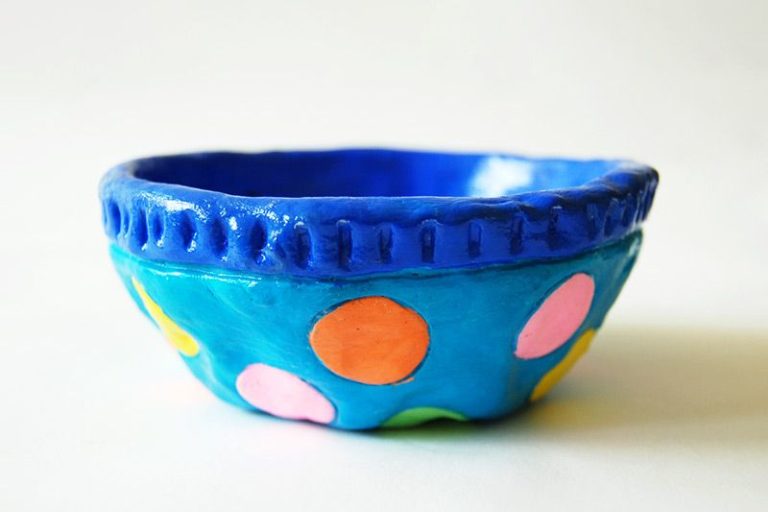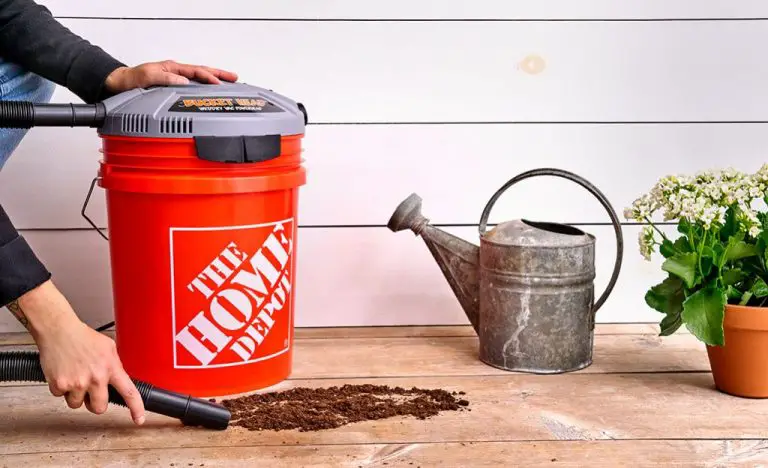What Is Terracotta Normally Used For?
Terracotta, also known as baked clay or fired clay, is a type of ceramic made from clay that has been shaped and then fired at high temperatures to harden it. The word “terracotta” comes from the Italian word for “baked earth.”
Terracotta has been used across numerous ancient cultures for thousands of years, dating back to early human civilizations. Its durability and ability to be molded into various shapes and sizes has made it a versatile material for crafting sculptures, pottery, tiles, architectural decorations, and more.
Some of the most common uses of terracotta throughout history include as decorative art, cooking vessels, plant containers, water storage, floor and wall tiles, jewelry making, musical instruments, and industrial applications.
Decorative Uses
Terracotta has a long history of being used decoratively in sculpture, architectural decoration, and pottery due to its versatility, affordability, and earthy colors. The term “terracotta” comes from the Italian word for “baked earth,” referring directly to the process of shaping clay into a desired form and hardening it through firing. This allows artisans to craft beautiful ornate works of art, ornamentation, and functional pottery out of the readily available material.
Sculptures made from terracotta date back as far as the ancient Mesopotamian and Chinese civilizations thousands of years ago. The Tang Dynasty in China (618-907 AD) was especially known for skilled terracotta artistry, producing life-sized warrior figures to guard tombs of emperors. Ancient Greek and Roman cultures also used terracotta extensively in figurines, reliefs, and busts. Terracotta continues to be a popular medium in modern sculpture for its moldability, color variation, and rustic texture.
Architecturally, terracotta has been used to add decorative flair to buildings across many cultures for centuries. Elaborately carved terracotta elements like reliefs, tiles, and ornaments adorn ancient landmarks. Terracotta was particularly widespread on Victorian era buildings in England and the United States, often seen in fired clay plaques, cornices, pillars, and chimney pots with ornate patterns. It remains a common exterior decoration today, bringing visual interest and durability to facades.
Finally, terracotta is intertwined with the history of pottery around the world. From ancient Greek painted vases to Italian Renaissance majolica pottery to the famous unglazed orange clay pots of the American Southwest, terracotta has long been handcrafted into beautiful and functional vessels. The natural reddish-brown color and texture lend an organic, earthy quality much prized in pottery and ceramics.
Cooking Vessels
Terracotta has been used to create cooking vessels for thousands of years across many cultures. Its porous, heat-retaining properties make it an ideal material for cooking pots, tagines, pizza stones, and more.
Terracotta cooking pots are prized for cooking rice, beans, stews, and braises. The clay disperses heat gently and evenly, preventing scorching or sticking. Terracotta pots allow evaporation so food doesn’t boil over. As liquids evaporate through the pores, pressure inside the vessel stays constant, concentrating flavors.
Tagines are a North African style of cooking vessel with a tall, conical lid. They are traditionally made from terracotta clay and excel at long, slow simmering of meats and vegetables. The steam condenses on the lid and drips back down, keeping food incredibly moist.
Pizza stones made of terracotta excel at dispersing heat evenly to create crisp, nicely charred crusts. The porous nature also allows excess moisture to evaporate for a crisper crust. Terracotta releases heat slowly for consistent baking.
Plant Containers
Terracotta is an extremely popular material for plant pots and planters. The porous nature of terracotta provides several advantages for growing plants.
Terracotta allows air and moisture to penetrate the walls of the container. This creates a healthier environment for root systems. The evaporation of moisture through the terracotta also cools the roots of plants during hot weather.
The natural wicking action of terracotta reduces problems with overwatering. Excess water can evaporate through the sides and bottom of the pot. This prevents saturated soil and root rot.
Terracotta pots allow soil to breathe better than plastic and glazed ceramic pots. The improved aeration benefits the growth of roots and drainage.
The clay also provides minerals that may leach into the soil over time. This can be beneficial for certain plants.
The rustic aesthetic of terracotta pots appeals to many gardeners. The pots develop a patina as they age, adding to their charm.
In summary, the porous nature and earthy beauty of terracotta makes it an ideal material for plant containers of all types.
Water Storage
Terracotta has been widely used for water storage due to its porous nature. When filled with water, terracotta maintains moisture while allowing evaporation through the pores, which cools the water inside. This evaporation process makes terracotta an effective and traditional method for storing and cooling drinking water, particularly in hot climates.
Large terracotta vessels and jars have historically been the vessel of choice for drawing and safely storing water in many cultures around the world. Unglazed terracotta is naturally alkaline, which helps purify water and inhibit bacterial growth. Its porosity also filters impurities as the water seeps through the clay. The clay keeps water cool and fresh for long periods in hot conditions, making it superior to metal or sealed containers.
Even today, many households in hot regions around the globe rely on terracotta jars, jugs, and containers to hold and dispense drinking water. The natural cooling properties of the clay deliver fresh, cool water without the need for refrigeration. With proper care and cleaning, quality terracotta water jars can last for many years.
Floor and Wall Tiles
Terracotta tiles have been used to decorate floors and walls for thousands of years. In ancient Mesopotamia, terracotta tiles were used in palaces and temples as early as the 4th millennium BCE. The ancient Greeks and Romans also used terracotta tiles extensively. Many intact tile floors and walls have been found at archeological sites across the Mediterranean.
Terracotta’s popularity for floor and wall tiles continued well into the Middle Ages and Renaissance. Intricate geometric and figural designs characterize terracotta tiles from these periods. By the 19th century, terracotta tile designs became increasingly elaborate and diverse. The Victorian era saw a resurgence of interest in terracotta tiles as both a decorative and practical building material.
Today, terracotta remains a popular choice for floor and wall tiles due to its durability, aesthetics, and environmental sustainability. Both handmade and mass-produced terracotta tiles are used in residential and commercial spaces. Advances in digital printing technology allow for greater customization and detailed designs on terracotta tiles. The natural colors and textures of terracotta add warmth and character to any space.
Jewelry
Terracotta has long been used to create beads and other decorative elements for jewelry. The natural earthy tones and texture of terracotta make it well-suited for rustic, bohemian, and artisan-style jewelry designs. Terracotta beads are lightweight and porous, making them comfortable for extended wear. They can be painted, glazed, or fired at high temperatures to create different colors, finishes, and durability.
Some common types of terracotta jewelry include:
- Terracotta bead necklaces, bracelets, and earrings
- Pendants carved or molded from terracotta
- Terracotta buttons on bracelets or necklaces
- Fired terracotta clay beads with metallic luster finishes
- Natural, earthy terracotta beads mixed with gemstones and other materials
The natural reddish-orange hue of terracotta is especially popular for bohemian jewelry designs. Terracotta’s organic imperfections and handmade look make it ideal for artisan-crafted jewelry. With glazing or firing techniques, terracotta can take on a wide palette of saturated colors and finishes. Terracotta’s accessibility and moldability allow jewelry artists great creative freedom to shape it into unique beads, pendants, buttons, and components for one-of-a-kind designs.
Musical Instruments
Terracotta has a long history of being used to make musical instruments due to its acoustic properties. The porous nature of terracotta allows it to resonate and amplify sound in unique ways. Some of the most common terracotta musical instruments include:
- Ocarinas – These ancient flute-like instruments often have an egg-shaped body made from terracotta. They are simple to play, producing sweet, high-pitched tones.
- Xun – Chinese vessel flutes that are one of the oldest musical instruments in China. Xuns are globe or egg-shaped flutes made from terracotta or ceramic.
- Recorders – Soprano recorders used for music education are frequently constructed from glazed terracotta. Their warm, organic sound makes them a popular choice.
- Whistles – Terracotta whistles and ocarinas were used by many ancient cultures in ceremonies and rituals.
- Singing bowls – Small water vessels or bowls made from fired terracotta can act as resonators when struck or rubbed.
The natural acoustic properties of terracotta make it an ideal material for producing, amplifying, and resonating musical notes. Musicians around the world have recognized these qualities for centuries, leading to terracotta’s enduring use in musical instruments.
Industrial Applications
Terracotta plays an important role in several industrial applications thanks to its porous nature, durability, and heat resistance. Some of the most common industrial uses include:
Batteries – Terracotta is used in lead-acid batteries as a micro-porous separator. The small pores in terracotta prevent electrical contact between the positive and negative plates while allowing the free flow of electrolytes.
Catalyst Support – The porous structure of terracotta provides a large surface area for catalysts to adhere to. This makes it a useful support material in catalytic converters, enzymatic reactions, and petroleum cracking.
Water Filtration – Unglazed terracotta is an inexpensive and effective filter for removing impurities and pathogens from water. The small pores trap contaminants while allowing water to pass through slowly.
Air Filtration – Terracotta pot filters filled with activated charcoal are a simple DIY method of filtering indoor air pollution and odors. The porous clay evenly distributes air flow over the carbon.
Thermal Storage – Some industrial furnaces and kilns use terracotta bricks filled with a phase-change material to store and release heat. This thermal mass can passively regulate temperatures.
The natural properties of terracotta make it a versatile material for industrial applications requiring filtration, heat resistance, catalyst support, and more.
Conclusion
Throughout history, terracotta has been an extremely versatile material used across many cultures for a variety of purposes. Its durability, affordability, and workability have made it a staple for decorative objects, cooking vessels, plant containers, water storage, floor and wall tiles, jewelry, musical instruments, and industrial applications. Terracotta’s reddish-orange color and texture lend themselves beautifully to both artistic works and functional items for the home. The practice of terracotta pottery and sculpture dates back thousands of years to ancient civilizations including those in China, the Mediterranean, and the Americas. Today, terracotta remains a popular choice for its aesthetic qualities and usefulness thanks to its porousness, thermal properties, and ease of molding it into various shapes and sizes. Whether employed to make a simple flower pot or an intricate architectural ornament, terracotta continues to be appreciated for its rich history and enduring practicality.


